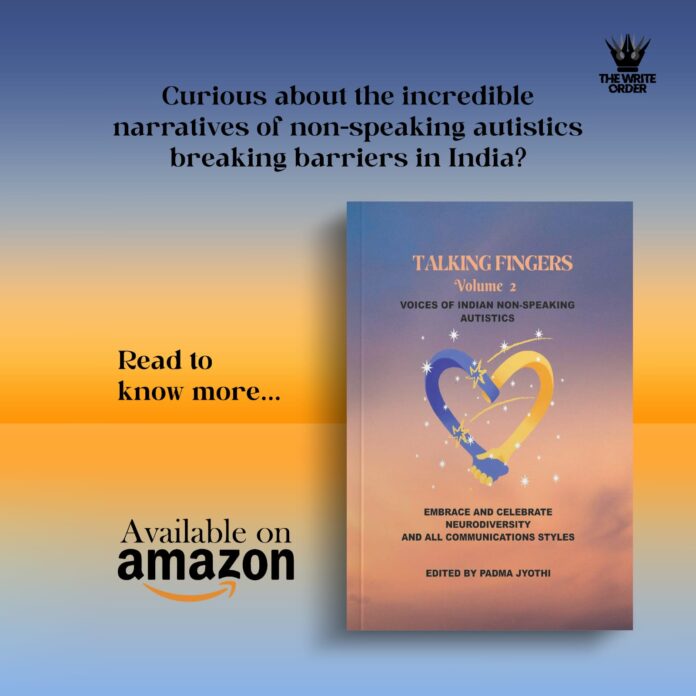- Can you provide an overview of your book and how it addresses key challenges in the world today?
The book – Talking Fingers, features the voices of 16 non-speaking autistic individuals who type/write to communicate. There is a misconception that people who can’t speak have nothing to say and through this book, we are trying to portray that they may not speak verbally but given a means to communicate, they can eloquently share their thoughts and feelings with us. With the increasing number of Autism diagnoses in India, we want to raise awareness about Alternative modes of communication that open new worlds for them.
2. What inspired you to bring out this book, and what specific expertise or experiences do you bring to the subject matter?
I am a mother of a 22 year old non-speaking autistic young man who types to communicate. I am also a blogger, we share our homeschooling resources and lived experiences in the blog. Over the years I felt there’s the need for a book that features the Indian voices on the Autism spectrum and that’s where the seed of the book was born. The first volume of Talking Fingers book was published 15 months ago and was a humongous success within the Autism community. Now, we want to carry forward the journey and are back with the second volume. I am the editor and sixteen non-speaking autistics have co-authored the book and shared their priceless lived experiences.
3. Could you share some of the most valuable insights or takeaways that readers can expect from your book?
The most valuable insight would be that, though they are diagnosed with Autism and face many obstacles because of their sensory difficulties and lack of speech, deep within them is the same need of love, friendship and companionship that drives all of us. They want your empathy, not your sympathy. Look beyond the disability and give them a means to communicate so that their voice is heard and understood.
4. In your book, do you offer any unique strategies or solutions for parents and therapists looking for a way to help their child?
The book is written by individuals with autism, who are the real experts and the best ones to help us by sharing their lived experiences. Throughout the book, they share rare insights into the silent world before learning to communicate and how life changed afterwards. You can read their thoughts on a myriad of topics and hopefully along the way, pick up a few strategies that may change your perspective and help you take the next step in the communication journey with your child or student.
5. Can you highlight any real-world examples of how your book helped parents of Autistic children?
I have interacted with many parents in the course of bringing out this book and they all have expressed similar sentiments of how Talking Fingers helped them realize the importance of communication. The book gave many parents the much needed impetus to explore communication beyond basic needs and getting to know their inner thoughts and feelings. Generally, there is a significant time gap after the Autism diagnosis for the parent to accept that their child may not be able to speak verbally and needs alternate modes of communication and Talking Fingers has helped bridge that gap. More and more parents and therapists are exploring AAC as a means of communication in the early years and that’s a really wonderful outcome!
6. Are there any particular challenges or obstacles you encountered while bringing out this book, and how did you overcome them?
I had to self publish this book as no publisher was willing to take the risk. But this is our life and we want to bring positive changes in the way Autistics are understood and accepted. This book is our way of changing the mindset of society, this is a book with a cause.
7. What do you hope readers will gain from reading your book, and how do you envision it making a positive impact on their lives?
Readers will gain deeper insights into the world of Autism and how they can help create a more inclusive society where using alternative means of communication when you are unable to speak is as normal as using spectacles when you’re unable to see clearly.
8. In a rapidly changing lifestyle, how does your book stay relevant and adaptable for readers over time?
The book has insights that will embrace your heart and stay with you for a long time. When you come across a non-speaking autistic individual in future, you will hopefully remember us and treat that person with love, compassion and the respect they deserve. That is how we aim to bring a change in the society, one step, one heart, at a time and these small drops will one day become an ocean!




